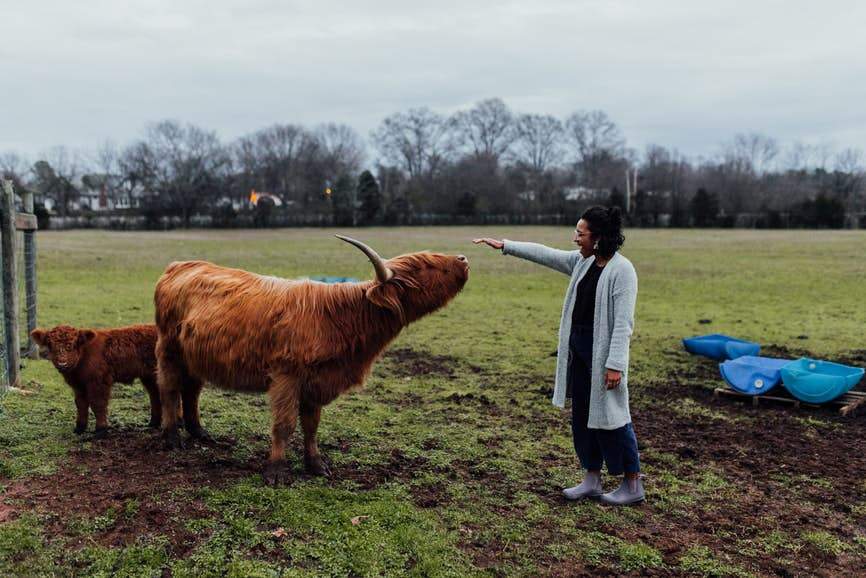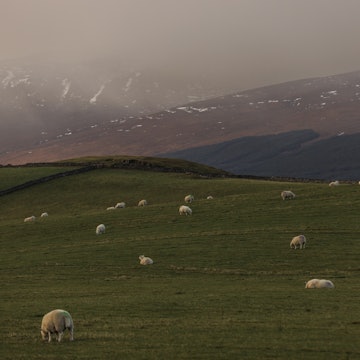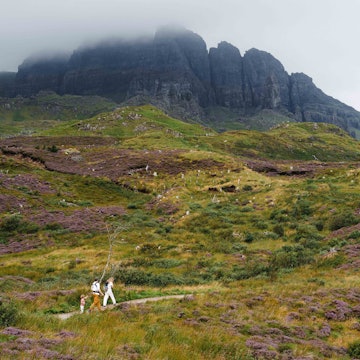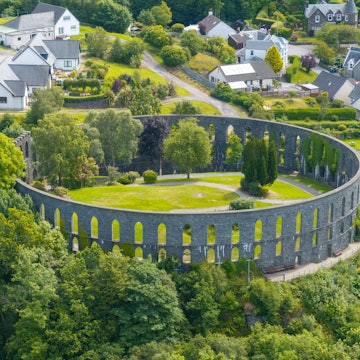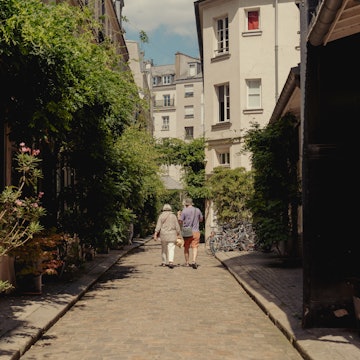
Scotland itinerary: Discover Orkney with this 5-day island-hopping itinerary

Jun 6, 2025 • 12 min read

Stromness and Kirkwall are the gateways to island adventures in Orkney. Colombo Nicola/Shutterstock
Scotland offers itineraries for everyone. Edinburgh and Glasgow circuits for city slickers. Tours of lochs and glens for outdoor enthusiasts. Chapel and castle itineraries for fans of Highland history. But for something off the beaten track, a five-day itinerary through the Orkney Islands is hard to beat.
Exposed to the winds and waves off the north coast of Scotland, Orkney is marinated in history. Even with just a few days to spare, you can wander through timeless stone circles, explore tombs graffitied by Vikings, and transport yourself back to Neolithic times in the Stone Age homes of Skara Brae.
On a five-day trip, you'll have time to stroll along empty beaches, gaze out from wave-lashed sea cliffs, boggle at the sight of vast flocks of seabirds, and island-hop by local ferry, experiencing a very different side to Scotland.
Along the way, there’ll be time to sample unique Orcadian delicacies such as award-winning cheeses, malty Orcadian ales, island whiskey, bay-harvested crustaceans, and North Ronaldsay's seaweed-fed lamb. Prepare to enjoy the best of Orkney on this five-day Scotland itinerary.
When to arrive
Orkney has a classic Scottish climate – pleasantly mild in summer, fresh in spring and fall, and lashed by snow, wind and rain in winter. The best time to visit is from May to September, but the sights on Mainland – Orkney’s largest island – can get crowded and there are midges about, though not as many as on the mainland thanks to the North Atlantic winds. Enjoy a quieter experience in May or September.
May to September is also the best season for camping, hiking and diving on the WWI shipwrecks of Scapa Flow. Birders gather in Orkney in spring and fall, as huge flocks of migrating terns, kittiwakes, skylarks, puffins and other migratory visitors gather on the islands’ cliffs and lochs.

How to get around
Getting to and around the Orkney Islands is easy thanks to convenient Loganair flights to Kirkwall, local flights to small airstrips throughout the islands, and ferries from the Scottish mainland to Kirkwall and Stromness. NorthLink ferries connect Aberdeen to Kirkwall and Scrabster (near Thurso) to Stromness.
Orkney Ferries runs passenger and vehicle ferries between Mainland and the smaller islands of Eday, Flotta, Hoy, Graemsay, North Ronaldsay, Westray, Papa Westray, Rousay, Egilsay, Wyre, Sanday, Shapinsay and Stronsay.
Bikes can be carried on Orkney’s ferries for free; if you want to rent a bike locally, try Cycle Orkney in Kirkwall or Orkney Cycle Hire in Stromness. If you plan to hire a car, they’re available in Kirkwall and Stromness, so you can start exploring as soon as you arrive. Timetables for island buses are available online.
Don’t dismiss the idea of exploring on foot. These mostly low-lying islands are crisscrossed by hiking trails, and there’s little traffic, so even walking on the roadside can be a peaceful and pleasurable experience.
What to pack
Whenever you visit, you’ll want to bring warm layers and waterproofs. Even in summer, daytime highs rarely exceed 15°C (59°F) and there’s a chance of rain at any time of year – there’s a reason the islands are so green with vegetation! During the summer, bring repellent and light-colored clothing with long sleeves to deter midges.
A windproof layer is another must. While winter sees the worst of the westerly and south-easterly gales, it can get blustery here year-round. Summer, meanwhile, sees the fog known locally as "sea haar," which can reduce visibility and obscure the views. Bring sturdy, waterproof footwear and spare socks as the ground is often soggy underfoot.

Day 1: Get a feel for Orkney in Kirkwall or Stromness
Go to Kirkwall or Stromness: Ferries and flights can get you to Orkney with minimal fuss – try to arrive on a morning flight to Kirkwall or a morning ferry to Stromness to maximize sightseeing time (ferries from Aberdeen to Kirkwall arrive in the evening).
How to spend the day: Find your feet on a local stroll. In Stromness, wander the street behind the quay, where tidy stone houses slip down to the water’s edge. This was where Captain Cook’s ill-fated flotilla limped ashore in the 1770s after Cook was killed in Hawaiʻi.
Some of Cook's South Sea Island artifacts can be seen in the Stromness Museum, alongside Neolithic treasures and relics from the German fleet scuppered in Scapa Flow at the end of WWI. Also worth a visit is the Orkney Brewery; brewery tours are offered at their Quoyloo premises, and you can sample their whisky-cask-aged Dark Island ale.
In Kirkwall, make time for St Magnus Cathedral, built by Norse jarls (earls) in the 12th century. Its interior is lined with heraldic medieval grave slabs engraved with skulls and crossbones, and there's a splendid monument to Orkney-born Dr John Rae, explorer of the Northwest Passage in the Arctic.
Next, dive deep into the islands’ rich history in the Orkney Museum, which covers everything from Neolithic jewelry to the Viking boat burial from Scar on the isle of Sanday. Nearby is the grand, Renaissance-style Earl’s Palace, built by the tyrant Earl Patrick Stewart in 1606; climb Bishop Reid’s Tower at the adjacent Bishop’s Palace for wonderful views of the cathedral.
Make one more stop at the Highland Park distillery on the southern outskirts of Kirkwall, to sample the islands’ finest dram on an informative tasting tour.
Evening: Stromness and Kirkwall have plenty of inviting spots to dine. In Stromness, try the laid-back Ferry Inn or the restaurant at the imposing stone Stromness Hotel. As Orkney’s biggest city, home to 10,000 Orcadians, Kirkwall has plenty of choices. Try snug Helgi’s for pub grub, or the Storehouse and Lynnfield Hotel for upmarket Scottish cooking and Orcadian delicacies.

Day 2. Dive into the Heart of Neolithic Orkney
Go to the Heart of Neolithic Orkney: You can explore Mainland by local bus, on foot or by rented bike or car; distances are small and traffic is light.
How to spend the day: Set aside a full day to explore the UNESCO-listed Heart of Neolithic Orkney – a collection of some of the finest ancient sites in Europe, dating back more than 5500 years. Start at Skara Brae, Northern Europe’s best-preserved Neolithic village, buried by storms in around 3500 BCE and predating Stonehenge and the pyramids of Giza.
Edging onto a pretty bay are Neolithic homes that still contain their original stone furniture – displayed much as they were rediscovered after a storm peeled back the turf and sand that covered them in 1850. See household items and Neolithic trinkets in the visitor center and take a hike along the shore to gaze over the dramatic sea cliffs at Yesnaby.
A short hop east are two of Orkney’s best preserved stone circles, the Ring of Brodgar and the Stones of Stenness, both part of an ancient ceremonial complex from the third millennium BCE that may have been as important as Stonehenge.
A short walk beyond is Maeshowe, the finest chambered tomb in Western Europe. Constructed from enormous sandstone blocks and hidden below a grassy mound, the tomb is accessed via a narrow passage that opens onto a 5000-year-old burial chamber daubed with graffiti by Viking raiders. Look out for such thoughtful messages from the past as “Thorni bedded Helgi.”
Other rewarding detours in the area include the Broch of Gurness – a fine example of an Iron Age drystone tower – and the ruins of the Earl’s Palace at Birsay, built in 1606 by the tyrant Patrick Stewart. Walk out to the Brough of Birsay at low tide (check tide times online) to view the ruins of Viking longhouses and the 12th-century St Peter’s Church.
Evening: Returning to Kirkwall or Stromness for supper and a drink is your best bet. Grab a pint at the Stromness Hotel, which has been greeting thirsty new arrivals since 1901. In Kirkwall, stop into Helgi’s or Oot the Back, the sampling space at artisan whisky and gin-maker, the Orkney Distillery, open late on Friday and Saturday.

Day 3. Explore Westray and Papa Westray
Go to Westray and Papa Westray: Orkney Ferries runs daily car ferry services from Kirkwall to Westray, or there are inter-island flights with Loganair. Local buses meet ferries at Rapness, transferring arrivals to Pierowall, the main town. To reach tiny, walkable Papa Westray, you can take the passenger ferry or the world’s shortest flight from Westray – a hop that can take as little as 53 seconds.
How to spend the day: One of Orkney’s finest and wildest coastal walks follows Westray’s west coast. The ferry timetable gives you nine hours on the island – plenty of time to complete this 13-mile, six-hour hike, taking in seabird colonies, dramatic sea cliffs and rocky stacks and arches.
If you prefer a shorter walk, hike the Noup Head Loop (four miles total starting from Backarras car park, or eight miles starting from Pierowall). The final mile to the lonely Noup Head lighthouse passes through an RSPB reserve whose sea cliffs attract vast numbers of breeding puffins, fulmars, skuas and other seabirds from April to July. Look out for seals hauled out on the skerries to the north of the headland.
As you loop back to Pierowall, you'll pass the ruins of 16th-century Noltland Castle, built by Gilbert Balfour, an aide to Mary, Queen of Scots, who took refuge here after participating in the murder of Mary’s second husband, Lord Darnley. Alternatively, book a fun tour with Westraak Tours, where locals Andy and Karen Penn will introduce you to their island, visiting historic sights and birding hotspots such as Noup Head and Nort’ Head.
Having crossed the 1.7 miles to tiny, low-lying Papa Westray (aka Papay), you can explore easily on foot. Hike or take a tour with the Papay Ranger to visit the awe-inspiring Knap of Howar, Europe’s oldest domestic building, built about 5500 years ago, and Europe’s largest colony of Arctic terns at North Hill.
Evening: If you stop over in Westray, Pierowall is the place to dine. Jack’s Chippy can cover your fish and chip cravings on Wednesday and Saturday, while the homey Pierowall Hotel serves wholesome pub grub daily.

Day 4. Explore naval history and admire the Old Man of Hoy
Go to Hoy: Orkney Ferries runs car ferries every few hours from Houton near Stromness to Lyness on Hoy, or there’s a cycle and passenger ferry from Stromness to Moaness on Hoy.
How to spend the day: Get an early start, as there’s plenty to
see on Hoy. The island’s best-known sight is the spectacular 137m-high
(450ft) sandstone sea stack known as the Old Man of Hoy,
jutting improbably from the sea off the island’s northwest coast. It
was first scaled in 1966 by a team led by Sir Chris Bonington.
Visit the Old Man from picturesque Rackwick Bay, a short drive from Lyness or a round-trip walk or cycle of around 10 miles from Moaness. It’s a 5.5-mile round-trip hike from Rackwick Bay to the clifftop beside the Old Man, from where you’ll get a stupendous view. Beware of aggressive skuas on the clifftop – they dive-bomb anyone who gets too close.
At the southern end of Hoy, Lyness was an important naval base during WWI and WWII, when the British Grand Fleet was based in Scapa Flow. It is now home to the fascinating Scapa Flow Visitor Centre & Museum, with displays exploring the sinking of the HMS Hampshire, HMS Vanguard and HMS Royal Oak and the scuppering of the German High Seas Fleet here in 1919.
Scuba divers from all over Europe come to Orkney to explore the
impressive wrecks of the German High Seas Fleet, which were sunk by
their commanders into the dark waters of Scapa Flow after being
captured at the end of the war. If you want to dive the wrecks, Kraken Diving offers guided dives from Birsay on Mainland for experienced divers only.
Evening: If you stay the night on Hoy, you can eat at the Royal Hotel or the Stromabank Hotel in Longhope, on the causeway-linked island of South Walls.

Day 5: Get off the beaten track in Rousay or Sanday
Go to Rousay or Sanday: Orkney Ferries services run every few hours from Kirkwall to Loth on Sanday, and from Tingwall on Mainland to Rousay.
How to spend the day: On day five, you can take your pick from the islands of Rousay and Sanday – or potentially fit in both if you get the first ferry to Sanday in the morning and head back to Mainland at lunchtime.
Aptly named, the blissfully quiet island of Sanday is ringed by Orkney’s best beaches with dazzling-white sand of the sort you’d expect in the Caribbean. Almost entirely flat, this 12-mile-long island can easily be covered by bike on a day trip by ferry from Kirkwall, or in less time by car.
Heading north from the ferry pier at Loth, there’s a fine sand beach at Backaskaill, across a small headland to the west of the tiny harbor village of Kettletoft. At the tip of the headland to the east is the impressively intact Quoyness Chambered Cairn, similar to Maeshowe but without the crowds.
If you’re spending the whole day here, explore the island’s crafts trail, and pause in the central hamlet of Lady to visit Sanday Heritage Centre with its exhibits on local history. You can hike from Lady to the dune-backed Bay of Newark or the shipwreck-ornamented Bay of Lopness, or head to the black-and-white striped Start Point Lighthouse at the island’s northeastern tip.
If you prefer a gentler fifth day with less ferry travel – or you still have time after a morning trip to Sanday – head to Tingwall on Mainland and board the ferry to Rousay, home to the 30m-long (98ft) Midhowe Tomb, dating from around 3500 BCE. Dubbed the “Great Ship of Death,” this is Orkney’s largest chambered tomb.
Today, Midhowe is covered by a modern canopy and a suspended walkway allows visitors to look over the 24 stone “stalls” where the bones of 25 Neolithic Orcadians were discovered. Next to the tomb lies the Midhowe Broch – the best-preserved broch in Orkney – with hearths, water tanks and stone storage shelves.
If you come by bike, you can cycle from the ferry pier to Midhowe in half an hour. Don’t leave it too late to turn back for Mainland; the last ferry from Rousay back to Tingwall leaves around 5:30pm.
Evening: With the ferry times, you’ll be back in Stromness or Kirkwall for the night, before exiting Orkney with a head full of memories.
This article was adapted from Lonely Planet’s Scottish Highlands & Islands guidebook, published in June 2025.





